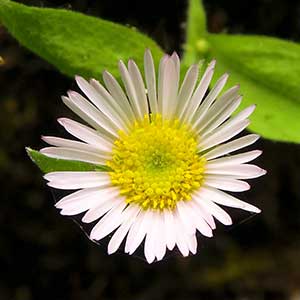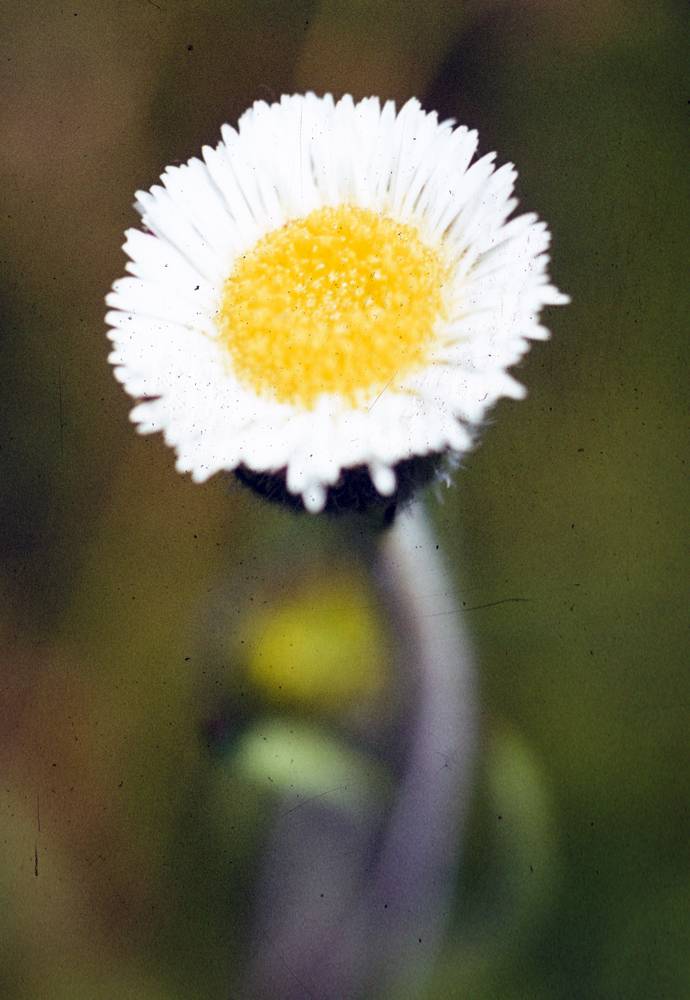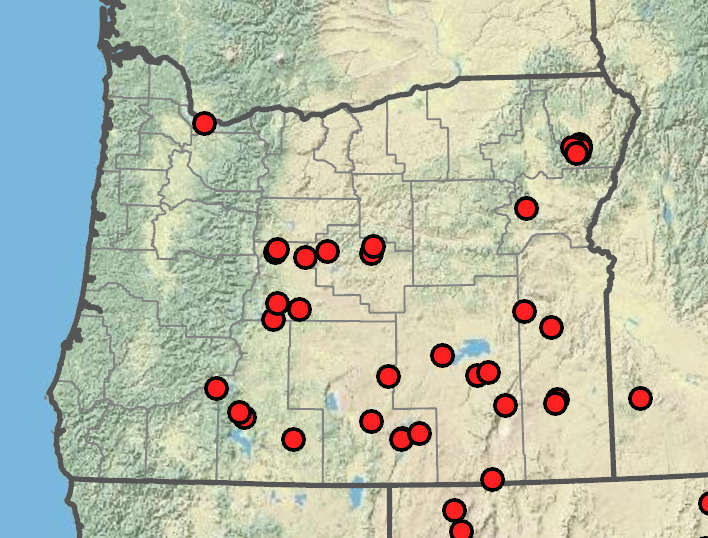Erigeron oreganus
Erigeron lonchophyllus
Gorge daisy, gorge fleabane, Oregon fleabane
short-rayed fleabane, spear-leaved fleabane
decumbent to erect; hirsute with unequal hairs, sparsely glandular.
erect, sparsely to densely hirsute, eglandular or occasionally with densely minute glands.
persistent, obovate, 15–90 × 5–20 mm;
margins coarsely serrate to shallowly lobulate;
surfaces sparsely to moderately hirsute to strigose.
persistent, oblanceolate to spatulate, 10–100 × 4–10 mm;
margins entire, often with spreading cilia;
surfaces glabrous to moderately hirsute or strigose.
obovate to elliptic; little or not reduced distally;
surfaces sparsely to moderately hirsute.
narrowly elliptic, oblong, oblanceolate to linear, 10–100 × 1–5 mm, reduced distally, bases often clasping;
surfaces glabrous to moderately hirsute or strigose.
4–7 × 9–15 mm.
4–7 × 5–11 mm.
30–60, pink to purple;
rays 4–5 × 0.5–1 mm.
40–100, white to pink;
rays 2–5 × 0.2–0.4 mm.
corollas 3–5 mm.
corollas 3–5 mm.
in 2–3 series, pale green with dark green medial stripe;
surfaces remotely hirsute, strongly stipitate-glandular.
in 2–3 series;
surfaces sparsely to densely hirsute, glandular or eglandular.
2–3 mm, moderately strigose;
inner pappi of several unbarbed to weakly barbellate twisted bristles.
1.5–2.5 mm, sparsely to moderately strigose;
inner pappi of numerous barbellate bristles.
1–4, radiate.
1–10 in raceme-like arrays, radiate.
=18.
Erigeron oreganus
Erigeron lonchophyllus
Shady cliffs, rocky slopes, crevices. Flowering May–Aug. 100–400 m. Casc. WA. Native.
This uncommon species is found only in the Columbia River Gorge.
Floodplains, lakesides, gravel bars, roadsides, marshes, seeps. Flowering Jun–Aug. 800–2300 m. BR, BW, Casc, ECas, Lava, Owy. CA, ID, NV, WA; north to AK, northeast to Nunavut, east to Quebec, southeast to NM. Native.
James Riser, Stephen Meyers
James Riser, Stephen Meyers
- Local floras:
BC,
CA,
OR,
WA
- Local Web sites:
CalFlora,
CalPhotos,
Flora NW,
PNW Herbaria
WildflowerSearch
iNaturalist (observations)
USDA Plants Database
- LBJ Wildflower Center
- SEINet
- Plants of the World Online
- Encyclopedia of Life
- Wikipedia
- Google Image Search





